-
 Bitcoin
Bitcoin $109,459.7682
2.44% -
 Ethereum
Ethereum $2,598.6052
6.29% -
 Tether USDt
Tether USDt $1.0003
0.00% -
 XRP
XRP $2.2734
3.95% -
 BNB
BNB $661.4886
1.58% -
 Solana
Solana $155.4825
4.35% -
 USDC
USDC $0.9999
-0.02% -
 TRON
TRON $0.2838
1.04% -
 Dogecoin
Dogecoin $0.1740
8.25% -
 Cardano
Cardano $0.6047
9.04% -
 Hyperliquid
Hyperliquid $40.2302
6.50% -
 Sui
Sui $2.9863
10.05% -
 Bitcoin Cash
Bitcoin Cash $509.5786
0.60% -
 Chainlink
Chainlink $13.8156
6.03% -
 UNUS SED LEO
UNUS SED LEO $9.0142
0.69% -
 Avalanche
Avalanche $19.0337
8.68% -
 Stellar
Stellar $0.2438
5.17% -
 Toncoin
Toncoin $2.9012
3.59% -
 Shiba Inu
Shiba Inu $0.0...01210
6.20% -
 Litecoin
Litecoin $90.0882
7.05% -
 Hedera
Hedera $0.1597
8.53% -
 Monero
Monero $326.3340
2.88% -
 Polkadot
Polkadot $3.6365
9.32% -
 Bitget Token
Bitget Token $4.6162
2.72% -
 Dai
Dai $1.0001
0.00% -
 Ethena USDe
Ethena USDe $1.0002
-0.01% -
 Uniswap
Uniswap $7.6403
10.47% -
 Pepe
Pepe $0.0...01060
12.03% -
 Aave
Aave $281.3664
7.56% -
 Pi
Pi $0.4992
1.76%
How to calculate the profit and loss of HTX's contract positions?
HTX offers futures and perpetual contracts; mastering P&L calculation, considering entry/exit prices, leverage, and funding rates, is key to successful trading.
Apr 08, 2025 at 01:36 am
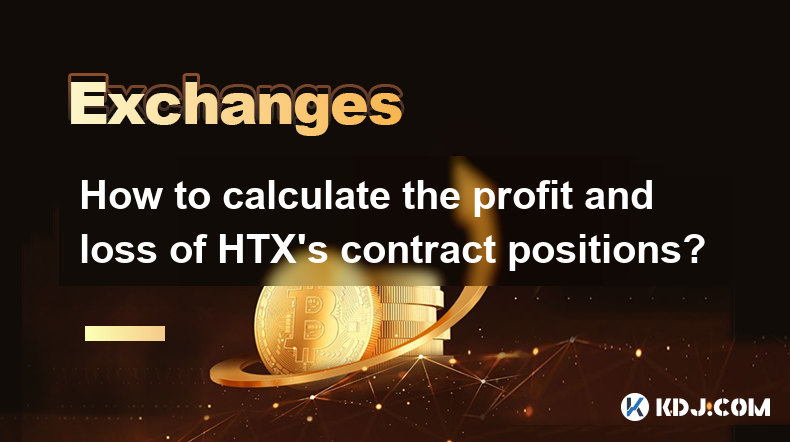
Introduction to HTX's Contract Trading
HTX, formerly known as Huobi, is a leading cryptocurrency exchange that offers various trading products, including futures and perpetual contracts. Understanding how to calculate profit and loss (P&L) on these contract positions is crucial for traders looking to maximize their returns and manage risks effectively. The key to successful trading on HTX lies in mastering the calculation of P&L, which involves several factors such as entry and exit prices, leverage, and the type of contract.
Understanding Contract Types on HTX
HTX offers two main types of contracts: futures contracts and perpetual contracts. Futures contracts have an expiration date, while perpetual contracts do not expire and are designed to mimic the spot market more closely. The type of contract you are trading will affect how you calculate your P&L. For futures contracts, the P&L calculation involves the difference between the entry and exit prices, adjusted for the contract size and leverage. For perpetual contracts, the calculation also considers the funding rate.
Calculating P&L for Futures Contracts
To calculate the P&L for futures contracts on HTX, you need to consider the following steps:
- Determine the entry and exit prices: These are the prices at which you open and close your position.
- Calculate the price difference: Subtract the entry price from the exit price to find the profit or loss per contract.
- Multiply by the contract size: HTX's futures contracts have a specific size, typically in terms of the underlying cryptocurrency. Multiply the price difference by the contract size to get the total profit or loss in the base currency.
- Adjust for leverage: If you are using leverage, divide the total profit or loss by the leverage ratio to find the actual P&L in your account's currency.
For example, if you buy a Bitcoin futures contract at $50,000 and sell it at $55,000, with a contract size of 1 BTC and no leverage, your P&L would be calculated as follows:
- Price difference: $55,000 - $50,000 = $5,000
- Total P&L: $5,000 1 BTC = $5,000
If you used 10x leverage, your actual P&L would be $5,000 / 10 = $500.
Calculating P&L for Perpetual Contracts
Perpetual contracts on HTX are similar to futures contracts, but they also include a funding rate that can affect your P&L. The steps to calculate P&L for perpetual contracts are as follows:
- Determine the entry and exit prices: Similar to futures contracts, these are the prices at which you open and close your position.
- Calculate the price difference: Subtract the entry price from the exit price to find the profit or loss per contract.
- Multiply by the contract size: Use the contract size to convert the price difference into the total profit or loss in the base currency.
- Adjust for leverage: Divide the total profit or loss by the leverage ratio to find the actual P&L in your account's currency.
- Consider the funding rate: The funding rate is paid or received periodically and can either increase or decrease your P&L. Add or subtract the cumulative funding rate payments from your total P&L.
For example, if you buy a Bitcoin perpetual contract at $50,000 and sell it at $55,000, with a contract size of 1 BTC, no leverage, and a cumulative funding rate payment of $100, your P&L would be calculated as follows:
- Price difference: $55,000 - $50,000 = $5,000
- Total P&L before funding: $5,000 1 BTC = $5,000
- Total P&L after funding: $5,000 - $100 = $4,900
If you used 10x leverage, your actual P&L would be $4,900 / 10 = $490.
Using HTX's P&L Calculator
HTX provides a built-in P&L calculator that can help you quickly determine your profit or loss. To use the calculator, follow these steps:
- Navigate to the trading page: Go to the futures or perpetual contracts trading page on HTX.
- Select your contract: Choose the specific futures or perpetual contract you are trading.
- Enter your position details: Input your entry price, exit price, contract size, and leverage.
- Review the results: The calculator will display your P&L based on the information you provided.
Using the calculator can save time and ensure accuracy, especially when dealing with complex calculations involving leverage and funding rates.
Managing Risk and P&L
Effective risk management is essential for maintaining a healthy P&L on HTX's contract positions. Here are some strategies to consider:
- Set stop-loss orders: Use stop-loss orders to automatically close your position if the market moves against you, limiting potential losses.
- Monitor leverage: Be cautious with high leverage, as it can amplify both profits and losses. Adjust your leverage based on your risk tolerance and market conditions.
- Keep track of funding rates: For perpetual contracts, regularly check the funding rate and adjust your positions accordingly to minimize its impact on your P&L.
- Diversify your portfolio: Spread your investments across different assets and contract types to reduce the risk of significant losses in any single position.
By implementing these risk management strategies, you can better control your P&L and improve your overall trading performance on HTX.
Frequently Asked Questions
Q: How does the funding rate affect my P&L on perpetual contracts?
A: The funding rate is a periodic payment made between long and short positions to ensure the perpetual contract's price stays close to the spot market price. If you are long and the funding rate is positive, you will pay the funding rate, which reduces your P&L. If you are short and the funding rate is positive, you will receive the funding rate, which increases your P&L. The opposite applies when the funding rate is negative.
Q: Can I use the P&L calculator for both futures and perpetual contracts on HTX?
A: Yes, HTX's P&L calculator can be used for both futures and perpetual contracts. However, you need to ensure you input the correct contract type and consider the funding rate for perpetual contracts.
Q: What happens if my P&L becomes negative due to a margin call?
A: If your P&L becomes negative and triggers a margin call, HTX will automatically liquidate your position to cover the losses. This means you will lose your entire position, and any remaining negative balance will be covered by your account's available funds.
Q: How often should I check my P&L on HTX?
A: It is recommended to check your P&L regularly, especially during volatile market conditions. For active traders, checking your P&L at least once per trading session is advisable to ensure you are aware of your current position and can make timely adjustments.
Disclaimer:info@kdj.com
The information provided is not trading advice. kdj.com does not assume any responsibility for any investments made based on the information provided in this article. Cryptocurrencies are highly volatile and it is highly recommended that you invest with caution after thorough research!
If you believe that the content used on this website infringes your copyright, please contact us immediately (info@kdj.com) and we will delete it promptly.
- Coinbase's Crypto Conquest: The Liquifi Acquisition and the Token Revolution
- 2025-07-03 16:30:12
- Neo Pepe Coin: Can This Meme Coin Make Waves in the 2025 Crypto Market?
- 2025-07-03 16:50:12
- Toncoin, Dogecoin, and Shiba Inu: A Wild Ride in the Crypto Zoo
- 2025-07-03 16:30:12
- AllScale: Stablecoin Solutions Empowering Small Businesses – A New York Perspective
- 2025-07-03 16:35:12
- Neo Pepe Coin Presale: Is This Meme Coin a Serious Crypto Investment?
- 2025-07-03 17:10:11
- Memecoins to Buy in July 2025: Riding the Hype or Investing Wisely?
- 2025-07-03 17:10:11
Related knowledge
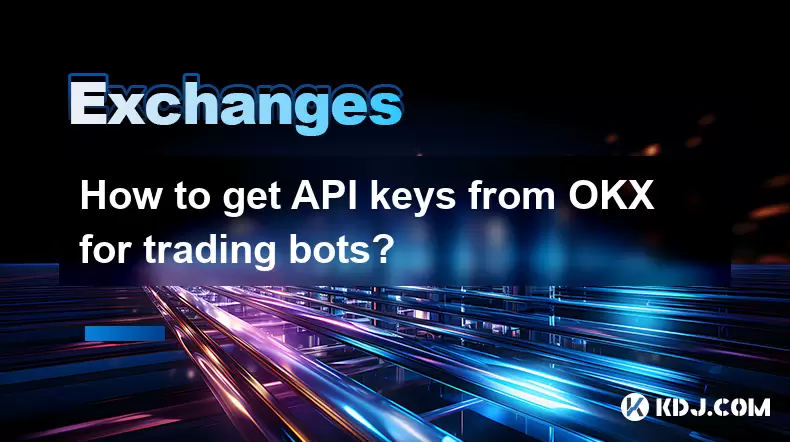
How to get API keys from OKX for trading bots?
Jul 03,2025 at 07:07am
Understanding API Keys on OKXTo interact with the OKX exchange programmatically, especially for building or running trading bots, you need to obtain an API key. An API (Application Programming Interface) key acts as a secure token that allows your bot to communicate with the exchange's servers. On OKX, these keys come with customizable permissions such ...
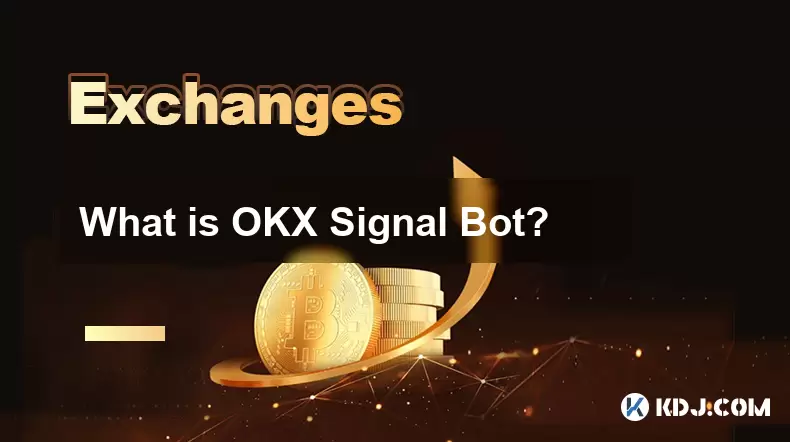
What is OKX Signal Bot?
Jul 02,2025 at 11:01pm
Understanding the Basics of OKX Signal BotThe OKX Signal Bot is a feature within the OKX ecosystem that provides users with automated trading signals and execution capabilities. Designed for both novice and experienced traders, this bot helps identify potential trading opportunities by analyzing market trends, technical indicators, and historical data. ...
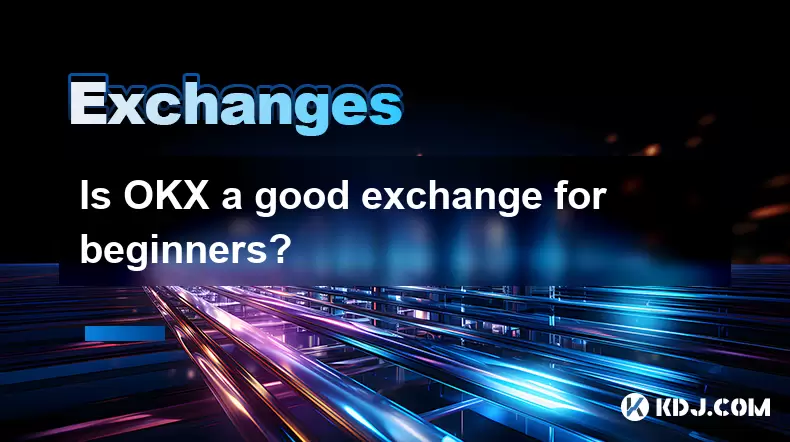
Is OKX a good exchange for beginners?
Jul 03,2025 at 05:00pm
What Is OKX and Why Is It Popular?OKX is one of the leading cryptocurrency exchanges globally, known for its robust trading infrastructure and a wide variety of digital assets available for trading. It supports over 300 cryptocurrencies, including major ones like Bitcoin (BTC), Ethereum (ETH), and Solana (SOL). The platform has gained popularity not onl...
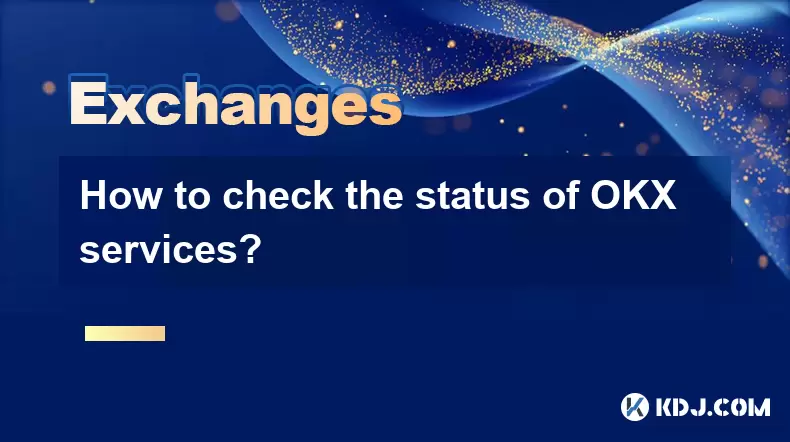
How to check the status of OKX services?
Jul 02,2025 at 11:14pm
What is OKX, and Why Checking Service Status Matters?OKX is one of the world’s leading cryptocurrency exchanges, offering services such as spot trading, futures trading, staking, and more. With millions of users relying on its platform for daily transactions, it's crucial to know how to check the status of OKX services. Downtime or maintenance can affec...
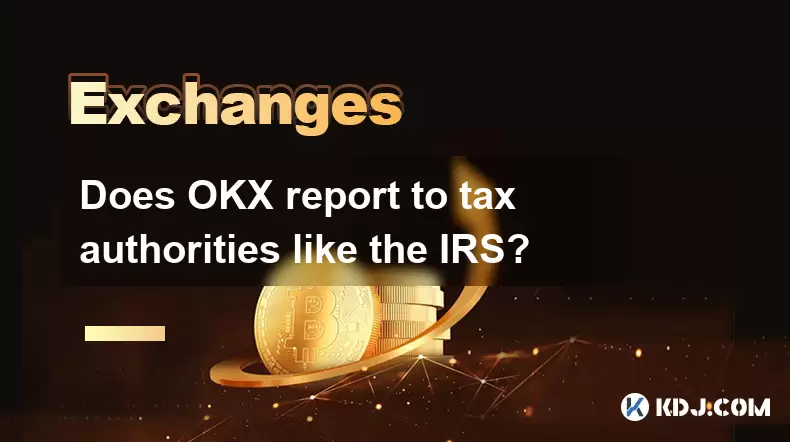
Does OKX report to tax authorities like the IRS?
Jul 03,2025 at 03:14pm
Understanding the Role of Cryptocurrency Exchanges in Tax ReportingCryptocurrency exchanges play a crucial role in facilitating digital asset transactions, but their responsibilities extend beyond trading and custody. As regulatory scrutiny intensifies globally, users are increasingly concerned about whether platforms like OKX report to tax authorities ...
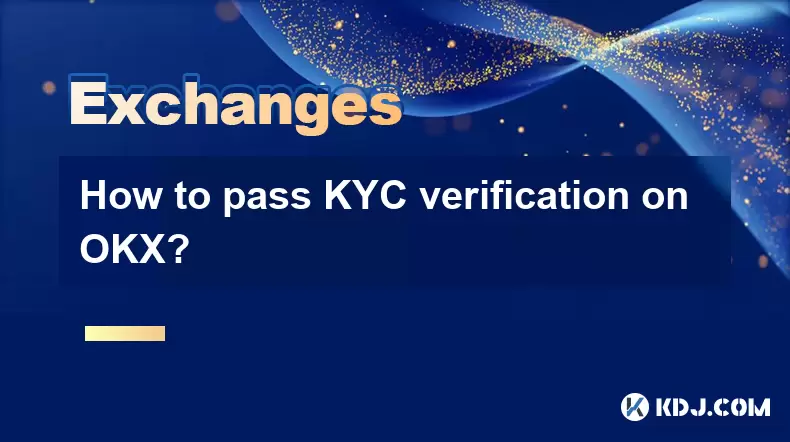
How to pass KYC verification on OKX?
Jul 03,2025 at 01:35am
What Is KYC Verification on OKX?KYC (Know Your Customer) verification is a mandatory process implemented by cryptocurrency exchanges to comply with global financial regulations. On OKX, this procedure ensures that users are who they claim to be, helping prevent fraud, money laundering, and other illicit activities. The KYC process typically involves sub...

How to get API keys from OKX for trading bots?
Jul 03,2025 at 07:07am
Understanding API Keys on OKXTo interact with the OKX exchange programmatically, especially for building or running trading bots, you need to obtain an API key. An API (Application Programming Interface) key acts as a secure token that allows your bot to communicate with the exchange's servers. On OKX, these keys come with customizable permissions such ...

What is OKX Signal Bot?
Jul 02,2025 at 11:01pm
Understanding the Basics of OKX Signal BotThe OKX Signal Bot is a feature within the OKX ecosystem that provides users with automated trading signals and execution capabilities. Designed for both novice and experienced traders, this bot helps identify potential trading opportunities by analyzing market trends, technical indicators, and historical data. ...

Is OKX a good exchange for beginners?
Jul 03,2025 at 05:00pm
What Is OKX and Why Is It Popular?OKX is one of the leading cryptocurrency exchanges globally, known for its robust trading infrastructure and a wide variety of digital assets available for trading. It supports over 300 cryptocurrencies, including major ones like Bitcoin (BTC), Ethereum (ETH), and Solana (SOL). The platform has gained popularity not onl...

How to check the status of OKX services?
Jul 02,2025 at 11:14pm
What is OKX, and Why Checking Service Status Matters?OKX is one of the world’s leading cryptocurrency exchanges, offering services such as spot trading, futures trading, staking, and more. With millions of users relying on its platform for daily transactions, it's crucial to know how to check the status of OKX services. Downtime or maintenance can affec...

Does OKX report to tax authorities like the IRS?
Jul 03,2025 at 03:14pm
Understanding the Role of Cryptocurrency Exchanges in Tax ReportingCryptocurrency exchanges play a crucial role in facilitating digital asset transactions, but their responsibilities extend beyond trading and custody. As regulatory scrutiny intensifies globally, users are increasingly concerned about whether platforms like OKX report to tax authorities ...

How to pass KYC verification on OKX?
Jul 03,2025 at 01:35am
What Is KYC Verification on OKX?KYC (Know Your Customer) verification is a mandatory process implemented by cryptocurrency exchanges to comply with global financial regulations. On OKX, this procedure ensures that users are who they claim to be, helping prevent fraud, money laundering, and other illicit activities. The KYC process typically involves sub...
See all articles

























































































